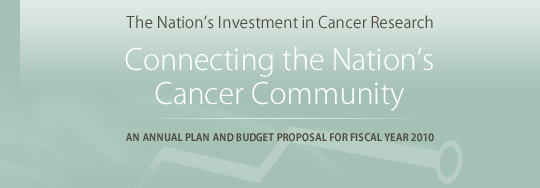
Nanotechnology materials are so small — less than one-billionth of a meter in size — that they are measured on a molecular scale. Many are so tiny that they can penetrate a tumor cell, and are already being used in imaging to make a tumor light up during an MRI scan. Others are being employed to convert magnetic fields into heat, thus destroying cancer cells. In the near future, nanoscale devices will be available to detect the presence of cancer at its earliest stages and to deliver targeted anticancer agents to the tumor.
One of today’s challenges is characterizing these materials. For example, slight changes in size or surface chemistry can dramatically influence a physiological response and make a significant difference in safety or potency. Laboratory methods used to evaluate physicochemical or immunological properties, and assays routinely used in preclinical characterization of conventional pharmaceuticals, often yield spurious results when applied to nanoparticle samples.
NCI’s Nanotechnology Characterization Laboratory (NCL) is an important component of the larger Alliance for Nanotechnology in Cancer. NCI, in partnership with the National Institute of Standards and Technology and the FDA, is analyzing the growing number of nanotechnology products that have potential in the detection, diagnosis, and treatment of cancer. The NCL’s primary focus is to help move these products towards clinical trials.
The NCL performs physiochemical characterization and safety and toxicity characterization, including both laboratory tests and animal studies, and provides information needed to help investigators. To date, the NCL has characterized over 130 different nanomaterial samples including liposomes, gold colloids, quantum dots, and metal oxides — submitted from laboratories in academia, industry, and government.
“At the NCL, we are evaluating nanoparticles and devices to inform the regulatory process and support environmental, health, and safety research of nanotechnologies,” said Scott McNeil, Ph.D., director of the NCL.

Back to Top | Previous Page | Next Page